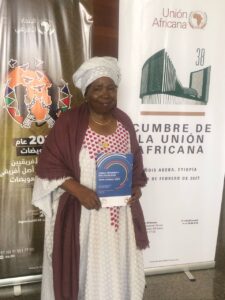
The ‘Oda Big Tree’ is believed to be the biggest tree in West Africa. The tree is of the Bako species and its botanical name is Tieghemela Heckle. It is located at Aprokumase in the Asene Manso Akroso District. Although many believe the tree is located in the Essen-Apam Forest Reserve, documents at the Forestry Commission suggest that the tree stands in the Asuboni Forest Reserve. It has a diametre of 3.22 metres at 1.37 metres, 2.72 metres at 3.1 meters, making 12 metres in circumference and 66.5-90 metres tall. Its girth is 10.11 metres at 1.4 metres and 8.63 metres at 3.1 metres. History has it that the tree is over 400 years old.
In February 2005, the Ghana News Agency (GNA) reported that the Ministry of Tourism and Modernization of the Capital City was going to develop the forest where the ‘Big Tree’ is located into a proper tourist site. Fast forward to June 2019, some 14 years later, Mr. Kwadwo Antwi, Chief Executive Officer of the Ghana Tourism Development Company (GTDC), is reported to have also said in a media report that the GTDC has put plans in place to take over the ‘Big Tree’ from the Forestry Commission (FC).
Mr. Antwi’s comment follows a report that some residents living in communities around the ‘Oda Big Tree’ have raised concerns over the deforestation of the forest in the area around where the ‘Big Tree’ is located.
Mr. Antwi said that the GTDC is considering establishing a highway rest-stop with recreational facilities, accommodation, fuel station and properly managed lavatories for tourists and other visitors’ use.
“The GTDC will, however, continue to negotiate with FC to take over total control of the Big Tree in order to develop the place into a proper tourist site,” he is reported to have said.
In October 2018, the District Chief Executive (DCE) of the Asene-Manso-Akroso District, Alex Incoom, also pleaded with the Forestry Commission to conserve the Asubone Forest Reserve which inhabits the ‘Oda Big Tree’.
According to the DCE, “The Assembly is scouting for strategic investors to develop the location of the Oda Big Tree into a proper tourist site and the continuous felling of the trees in the forest is making the job difficult for them.”
Mr. Incoom again stated that the assembly is looking forward to collaborating with the Ghana Tourism Development Corporation to enhance talks with the FC in order to get the commission to fast-track the processes of releasing the ‘Big Tree’ to the Ghana Tourism Authority and the assembly.
Almost a year down the line, nothing seems to be happening at this glorious heritage, that when developed can fetch for this country and the Asene Manso Akroso District millions of Ghana Cedis.
According to the World Economic Forum, travel and tourism as a global industry has flourished since 2017, and its contribution to global GDP (currently at 10%) is expected to rise by as much as 50 per cent over the next decade. In Africa, it is reported that approximately one billion people travel internationally each year. By 2030, consumer spending on tourism, hospitality, and recreation in Africa is projected to reach about $261.77 billion, $137.87 billion more than in 2015. United Nations World Tourism Organisation reports that international tourist arrivals in Africa are estimated to have increased by nine per cent in 2018.
Some countries in the sub-Saharan have seen strong performance improvements. These figures suggest that the tourism industry is booming across the world and it is now one of the major drivers of the economies of some countries.
What this means is that, given the needed attention, the tourism industry can be a major drive to a vibrant Ghana.
One of the biggest benefits of tourism to any country and locality is employment. Tourism creates skilled and unskilled employment. In a locality where the tourism sector is booming, souvenir sellers, food vendors and retailers naturally spring up within the community because they are aware tourists will need their services. This shifts the attention of youth chasing white collar jobs to becoming entrepreneurial and creative, hence reducing youth unemployment in the area.
Employment from the tourism sector also reflects in the boosting of the local economy. This is because the money made as a result of the employment would be injected into the economy of the locality. Also, the income of the personnel who will be officially employed by the tourism company, the hospitality industry, among others, will all be injected into the economy and thus improve the standard of living in the area.
Again, unlike other forms of economic activities such as mining, developing the big tree into a tourist site will protect and preserve the environment and heritage. Developing the ‘Big Tree’ and the forest that inhabits it will mean protecting natural vegetation which has several advantages to the lives of the people. The place can also be a nice place where cultural heritage will be showcased to entertain tourists and the local folks, and can be a good venue for several entertainment and social events. It can be a source of pride for the local community and allow them to look at their history and cultural heritage and develop their own community identity. This helps the local residents to maintain their traditions and culture while also showcasing it for all the visitors.
These and many more importance of tourism are the reason why the Ghana Tourism Company, the Forestry Commission, the Asene Manso Akroso District, the Akyem Kotoku Traditional Area, the Akyem Manso Traditional Division and all stakeholders must come on board to walk the talk of developing the area into a proper tourism site.
Enough of the ‘we are planning to do’. People must begin to walk the talk and get the place set. Who knows, I may even decide to have my wedding reception there, after all.
Source: eveningmailgh.com







